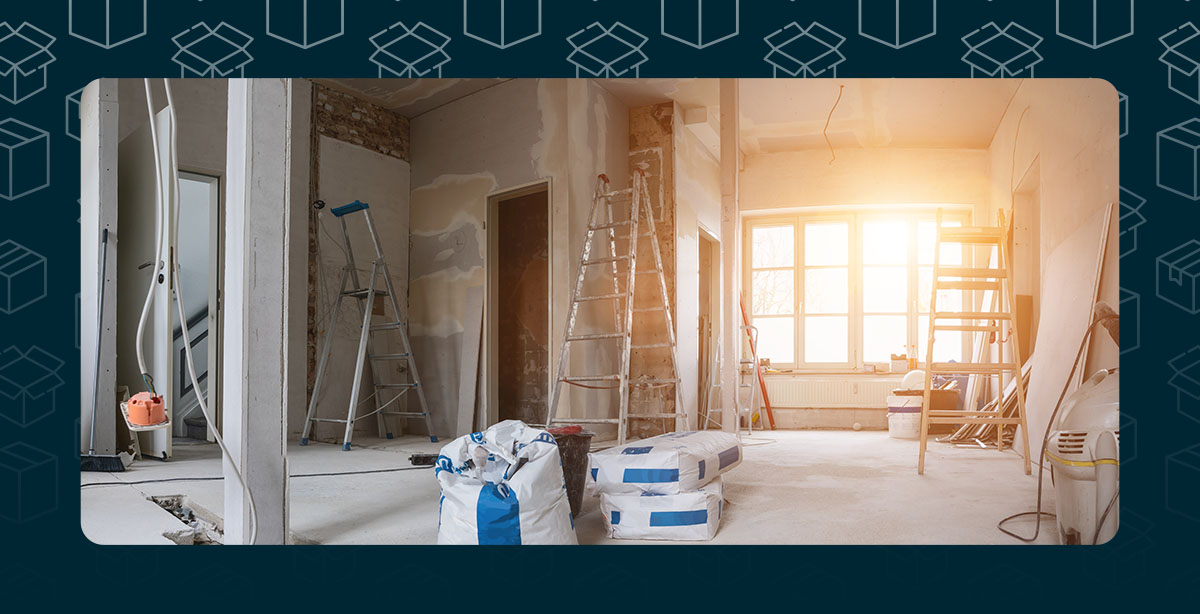
Homeowners in the United States spent $463 billion on renovations in the first quarter of 2024, with kitchens, guest bathrooms and primary bedrooms stealing the spotlight for the most popular rooms for updates. The remodeling or renovation process is an exciting experience, especially as you watch your vision turn into a reality.
While living on-site is an option for some, temporarily relocating can make things easier for everyone involved. You can escape the noise and dust, experience fewer disruptions to your daily routine and be out of your building team’s way. To help you plan and coordinate all the necessary details, here are six tips for moving during construction.
Speak with your contractor to get a clear idea of the building timeline. Getting on the same page regarding different phases of the project and key dates, such as when your demolition starts and finishes, will help you determine when you need to move your belongings. Let’s say your flooring installation is scheduled for the 18th — plan to move your furniture out by the 16th to give yourself a nice cushion of time to work with.
If you’re using a moving company, communicate your schedule early. It can also be helpful to share the construction timeline with your movers to avoid potential conflicts.
While your renovations are underway, you can choose from a variety of living arrangements, including renting a house or apartment, booking a hotel or staying with loved ones for a couple of nights.
Outlining your must-haves versus nice-to-haves can streamline your search and make it easier to find a space that feels right. Consider the following factors to evaluate your housing needs and preferences:
As you plan, address questions about costs from the start. The answer might affect your renovation or remodeling budget as a whole. Along with temporary housing, factor in the following essential expenses:

Creating a budget that feels manageable is vital for your peace of mind. Though these costs can quickly add up, there are ways to save money when you move. You could schedule your renovation to take place during the off-season when moving rates are lower, or consider packing and unpacking your belongings yourself.
Additionally, getting multiple quotes from movers allows you to pick one that offers the best bang for your buck — ensure you choose a reputable company. A moving loan can also provide the financial flexibility to cover the cost of moving without impacting your renovation plans.
One of the best tips for moving during a home renovation is to stay organized. Making a detailed checklist of crucial tasks like packing, moving and storage can help you keep track of everything and stick to your timeline. Breaking these tasks into smaller steps, like packing one room each day, can also allow for a more stress-free process.
You should also maintain open communication with contractors and movers. When discussing dates or plans, be sure to confirm in writing, either via email or text. This way, everyone can go back and double-check important information when necessary. Regular check-ins with your building team and moving company can also help ensure all parties remain up to date.
Decluttering before you pack is a must for any move. It makes packing and unpacking much easier and is an additional money-saving tactic — when you reduce your moving volume, you can often keep your expenses down. Plus, getting rid of items you no longer want or need allows you to get a fresh start when you move back into your updated home.
Follow these three steps for effective decluttering:
Another one of the most helpful tips for moving during a renovation is to pack strategically. Because you’re only temporarily relocating, the packing process will likely look slightly different from if you were preparing for a permanent long-distance move.
While you should still follow general packing techniques like protecting fragile items with Bubble Wrap and dissembling your furniture, here are some ways that you can pack strategically when moving to your temporary living space:
By following these coordination and planning tips for moving during construction or a renovation, you can set yourself up for a smoother, stress-free transition into your temporary living space. If you’re looking to make your moving experience even more seamless, Corrigan Moving Systems is here to lend a helping hand. We’re a full-service relocation company that has been helping families move since 1929.
With our local moving services, we’ll do all the heavy lifting — literally and figuratively! Our professional movers will handle it all, including loading and transportation. We also offer packing services to streamline the process, allowing you to focus on the excitement of your renovation. Plus, our security warehouse storage is ideal for keeping your belongings until your home is ready.
Contact us online or call us at 1-800-267-7442 to set up a free virtual or in-home consultation.